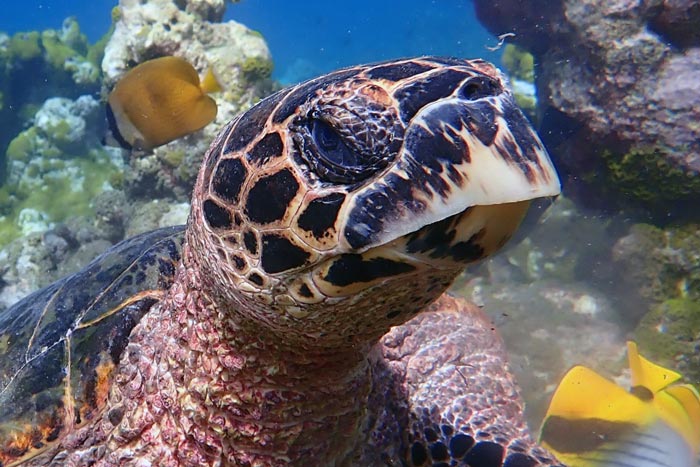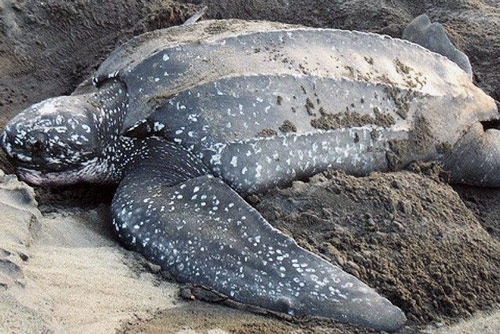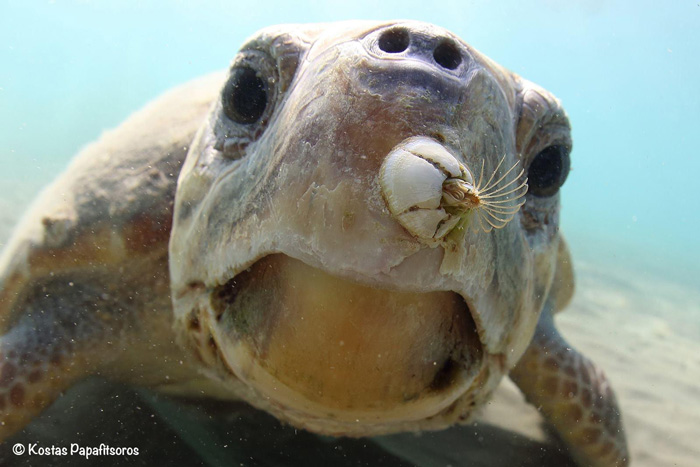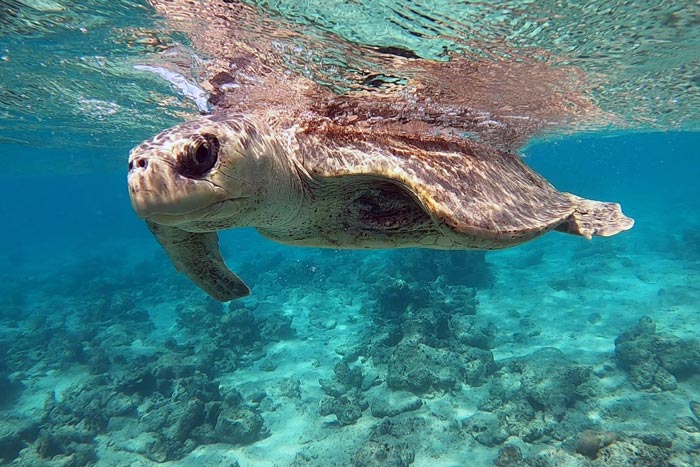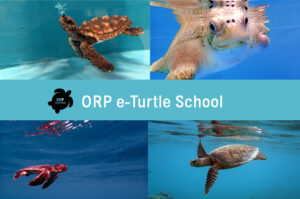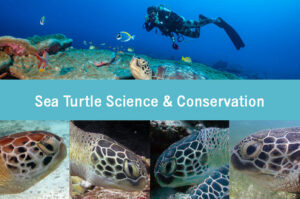Six of the world’s seven species of sea turtles live in the Indian Ocean: the flatback, green, hawksbill, leatherback, loggerhead and olive ridley. The abundance of each species differs between countries and oceanic areas. While green turtles and hawksbills are abundant in shallow coastal areas, such as in the Maldives and Kenya, the olive ridley turtle occupies more oceanic habitats, migrating towards coastal areas for nesting.
Important Nesting Grounds
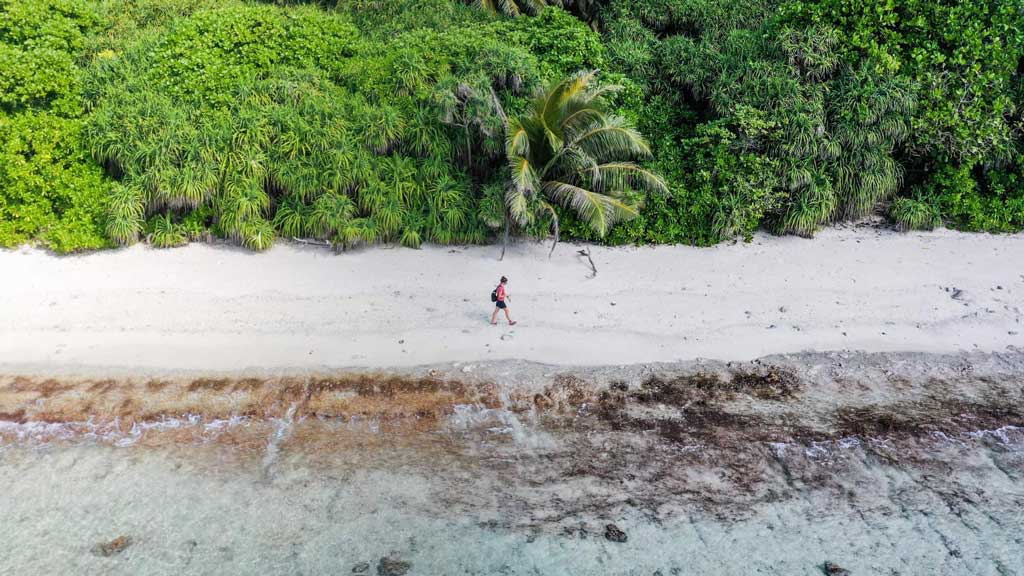
The Indian Ocean is home to countless sea turtle nesting sites, particularly for those of the olive ridley turtle. Just a handful of mass nesting beaches in the Indian Ocean account for the majority of olive ridley nesting within the region. Three arribada beaches in Odisha, India make up for an estimated 100,000+ nests per year: Gahirmatha, Devi River mouth and Rushikulya.
Other important nesting sites in the Indian Ocean include that of the critically endangered hawksbill. Hawksbills can be found nesting in the Seychelles, Indonesia, Australia and Oman. Considering many populations of hawksbill have been severely depleted, these nesting hotspots are extremely valuable for the future of this species.
Despite leatherback turtles being less common in the Indian Ocean than most other sea turtle species, they do have important nesting grounds in Indonesia, South Africa, Sri Lanka, Mozambique and the Andaman and Nicobar Islands. Meanwhile, the enigmatic flatback turtle predominantly resides in Australian waters, with Crab Island (Queensland, Australia) hosting the largest nesting population.
As well as this, several tens of thousands of female loggerhead turtles can be found nesting around the islands of Masirah (Oman) and Socotra (Yemen), making this population the second largest nesting aggregation of loggerheads in the world!
Epic Migrations
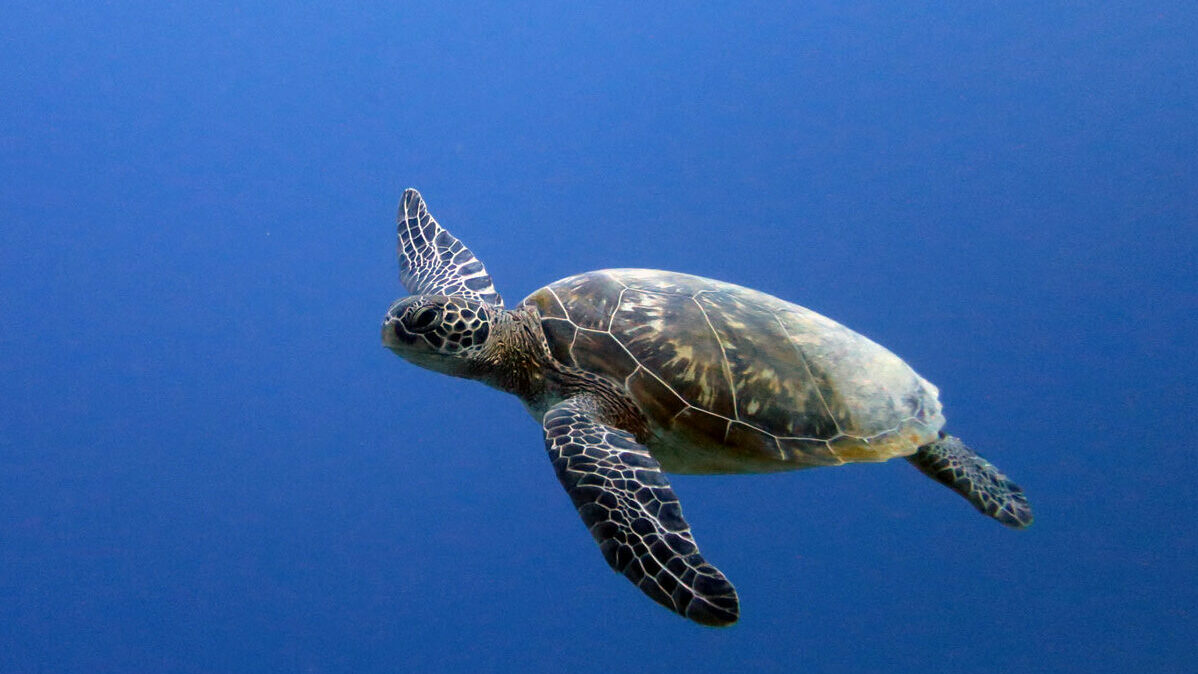
Green turtles have recently been recorded migrating just under 4,000km annually within the Indian Ocean, with one individual turtle travelling from Chagos Islands in the Indian Ocean to the coast of Somalia in east Africa!
Like many other species of sea turtle, green turtles frequently migrate between foraging and nesting sites. Nesting sites from green turtles within the region include the Seychelles, Maldives and Oman.
Enroll Today And Learn More About Sea Turtles:
Free Online Courses
e-Turtle School – All about sea turtles
Everything you have ever wanted to know about sea turtles, from evolution to conservation. Suitable for all sea turtles lovers and those who want to learn more about these fascinating creatures.
Sea Turtle Science & Conservation
Deep dive into sea turtle science and conservation. Suitable for budding conservationists and those with an interest in the science surrounding turtles, their biology and conservation.
References:
- Briscoe, D.K., Parker, D.M., Bograd, S., Hazen, E., Scales, K., Balazs, G.H., Kurita, M., Saito, T., Okamoto, H., Rice, M. and Polovina, J.J., 2016. Multi-year tracking reveals extensive pelagic phase of juvenile loggerhead sea turtles in the North Pacific. Movement ecology, 4(1), pp.1-12.
- Conant, T.A., Dutton, P.H., Eguchi, T., Epperly, S.P., Fahy, C.C., Godfrey, M.H., MacPherson, S.L., Possardt, E.E., Schroeder, B.A., Seminoff, J.A. and Snover, M.L., 2009. Loggerhead sea turtle (Caretta caretta) 2009 status review under the US Endangered Species Act. Report of the loggerhead biological review Team to the National Marine Fisheries Service, 222, pp.5-2.
- Hays, G.C., Mortimer, J.A., Ierodiaconou, D. and Esteban, N., 2014. Use of long‐distance migration patterns of an endangered species to inform conservation planning for the world’s largest marine protected area. Conservation Biology, 28(6), pp.1636-1644.
- Karl, S.A. and Bowen, B.W., 1999. Evolutionary significant units versus geopolitical taxonomy: molecular systematics of an endangered sea turtle (genus Chelonia). Conservation biology, 13(5), pp.990-999.
- Limpus, C.J., Couper, P.J. and Couper, K.L.D., 1993. Crab Island revisited: reassessment of the world’s largest flatback turtle rookery after twelve years. Memoirs of the Queensland Museum. Brisbane, 33(1), pp.277-289.
- Pritchard, P.C., 1999. Status of the black turtle. Conservation Biology, pp.1000-1003.
- Mast, R.B., Hutchinson, B.J. and Hutchinson, A.H. eds., 2008. Proceedings of the Twenty-fourth Annual Symposium on Sea Turtle Biology and Conservation: 22 to 29 February 2004, San José, Costa Rica (Vol. 567). National Marine Fisheries Service, Southeast Fisheries Science Center.
- Mortimer, J.A. and Carr, A., 1987. Reproduction and migrations of the Ascension Island green turtle (Chelonia mydas). Copeia, pp.103-113.
- National Marine Fisheries Service and US Fish and Wildlife Service (NMFS and USFWS), 2020. Endangered Species Act status review of the leatherback turtle (Dermochelys coriacea).
- US Fish and Wildlife Service, 2007. Hawksbill Sea Turtle (Eretmochelys imbricata). 5-Year Review: Summary and Evaluation.
- US Fish and Wildlife Service, 2014. Olive Ridley Sea Turtle (Lepidochelys Olivacea) 5-Year Review : Summary and Evaluation
- Witt, M.J., Augowet Bonguno, E., Broderick, A.C., Coyne, M.S., Formia, A., Gibudi, A., Mounguengui Mounguengui, G.A., Moussounda, C., NSafou, M., Nougessono, S. and Parnell, R.J., 2011. Tracking leatherback turtles from the world’s largest rookery: assessing threats across the South Atlantic. Proceedings of the Royal Society B: Biological Sciences, 278(1716), pp.2338-2347.



